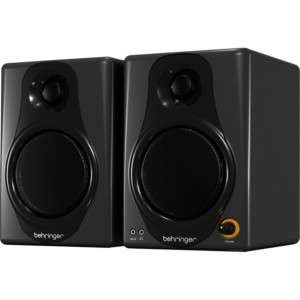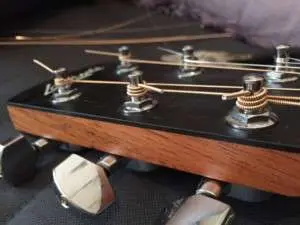
How to choose an accordion
Contents
The accordion is a keyboard-wind musical instrument, consisting of two boxes, connecting bellows and two keyboards: a push-button keyboard for the left hand, a piano-type keyboard for the right hand. An accordion with a push -button type on the right keyboard is called an accordion.
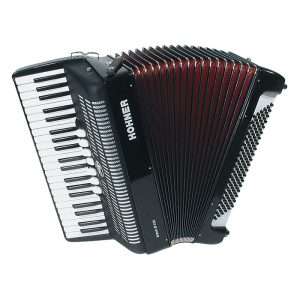 Accordion | 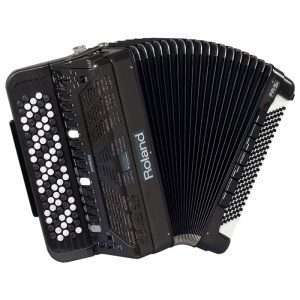 Accordion |
The very name ” accordion “ (in French “accordeon”) means “hand harmonica”. So called it in 1829 in Vienna master Cyril Demian , when together with his sons Guido and Karl he made an harmonica with chord accompaniment in his left hand. Since then, all harmonicas that had chord accompaniment have been called accordions in many countries . If we count from the date of the name of the instrument, then it is already more than 180 years old, i.e. almost two centuries.
In this article, the experts of the store “Student” will tell you how to choose the accordion that you need, and not overpay at the same time. So that you can better express yourself and communicate with music.
Accordion sizes
Of course, the required size of the instrument should be suggested by the teacher. If there is no one to tell, then one must proceed from a simple rule: when staging a button accordion ( accordion a) on a child’s lap, the instrument should not reach the chin.
1/8 – 1/4 – for the youngest, i.e. for preschoolers (3–5 years old). Two- or one-voiced, on the right – 10-14 white keys, on the left a very short row of basses, without registers . Such tools are very rare, and they are also in very little demand (it is not often that there are those who want to teach children seriously at this age). More often such specimens are used as a toy.
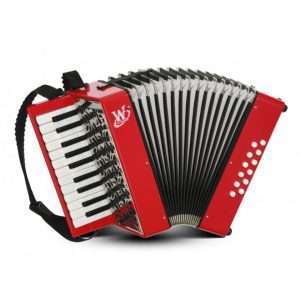
Accordion 1/8 Weltmeister
2/4 – for older preschool children , as well as for young schoolchildren, in general, for “beginners” (5–9 years old). These tools are in great demand, one might say, “indispensable”, but, unfortunately, there are very few of them (a significant drawback). Advantage: lightweight; compact, it has a small range of melody and bass, but it is quite sufficient to master the first “basics” of playing the accordion e.
More often two-voiced (there are also 3-voices), on the right there are 16 white keys (si of a small octave – up to the 3rd octave, there are other options), registers can be 3, 5 or completely without registers . In the left hand, there are completely different combinations – from 32 to 72 bass and accompaniment buttons (there are mechanics with one and two rows of basses; “major”, ” minor “, “seventh chord” must be required, in some there is also a “reduced” row). Registers in the left mechanics are usually absent.
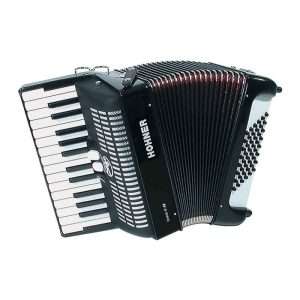
Accordion 2/4 Hohner
3/4 is perhaps the most common accordion size . Even many adults prefer to play it instead of full (4/4), because it is much lighter and quite suitable for playing music of the “simple” repertoire. Accordion 3-voice, 20 white keys on the right, range : salt of a small octave – mi of the 3rd octave, 5 registers ; on the left, 80 bass and accompaniment buttons, 3 registers (some with 2 registers and without them), 2 rows of basses and 3 rows of chords (accompaniment).

Accordion 3/4 Hohner
7/8 – the next step on the way to the “full” accordion , 2 white keys are added in the right keyboard (22 in total), bass 96. Range – F of a small octave – F of the third octave. There are 3 and 4 voices. In 3-voices, there are 5 registers on the right , in 4-voices 11 registers (due to the greater number of voices, the latter are heavier in weight by ≈ 2 kg).

Accordion 7/8 Weltmeister
4/4 – “full” accordionused by high school students and adults . 24 white keys (there are enlarged models with 26 keys), mostly 4-voice (11-12 registers ), as an exception – 3-voice (5-6 registers ). Some models have a “French filling”, where 3 notes sound almost in unison , but, having slight differences in tuning, they create a triple beat. As a rule, these tools are not used in vocational schools.
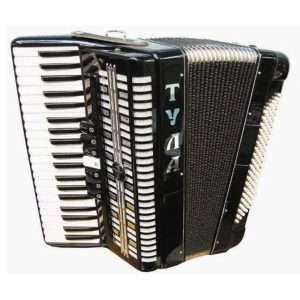
Accordion 4/4 Tula Accordion
Roland Digital Accordions
In 2010, Roland bought the oldest accordion manufacturer in Italy, Dallape , which has existed since 1876, which allowed it not to develop the mechanical part of the instruments itself, to train masters, but to immediately get their hands on the most advanced technologies for the production of accordions and button accordions, well, in one fell swoop. and digital filling, thanks to their latest developments, they were able to successfully create. So, digital button accordion and Roland digital accordion , let’s consider its main advantages:
- The digital accordion is much lighter in weight and dimensions are smaller than those of instruments of the same class.
- The instrument’s tuning can be easily raised and lowered as desired.
- The digital accordion is insensitive to changes in temperature and does not need to be tuned, which reduces the cost of their operation.
- The buttons on the right keyboard are easy to rearrange depending on the selected system (Spare – black and white, partially labeled, included).
- There is an output for headphones and external speakers, although the volume of the own sound is quite comparable to normal instruments (it can be reduced with a knob).
- Thanks to the built-in USB port, you can connect to your computer , download and update new Voices , Sounds and Orchestral combinations, record directly, connect MP3s and audio, and probably much more.
- The pedal, which is also a charger, allows you not only to switch registers , but also to perform the function of the right piano pedal (but its use is not necessary).
- You can use the knob on the left cover to change the pressure of the bellows familiar to you and, like a normal button accordion, change the dynamics of the sound.
- Built -in metronome.
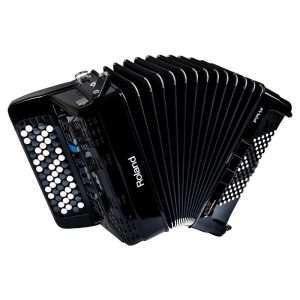
ROLAND FR-1X Digital Accordion
Tips from the store “Student” when choosing an accordion
- First of all , inspect the outside of the musical instrument to rule out the possibility of body defects. The most common types of external defects can be scratches, dents, cracks, holes in the fur, damaged belts, etc. Any deformation of the body negatively affects the work of the accordion .
- Next, there is a direct check of the musical instrument for sound quality. To do this, open and close the fur without pressing any keys. This will eliminate the possibility of air passing through holes that are not visible at first glance. Thus, the rapid release of air indicates the unsuitability of the fur .
- After that, check the quality of pressing all the keys and buttons ( including the “ventilator” – a button for releasing air). A quality accordion should not have any sticky or very tight keys. In height, all keys should be at the same level.
- Check direct sound quality by playing chromatic scales . Use your ear to determine the tuning level of a musical instrument. No key or button on both panels should produce a wheeze or creak. All registers should switch easily, and when you press another register , they should automatically return to their original position.
How to choose an accordion
Accordion examples
  Accordion Hohner A4064 (A1664) BRAVO III 72 | 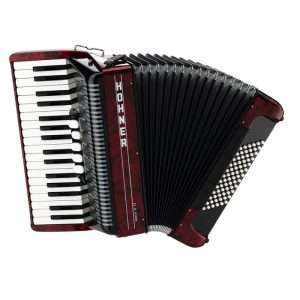  Accordion Hohner A2263 AMICA III 72 |
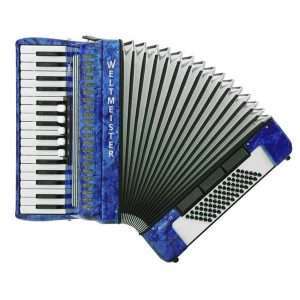  Accordion Weltmeister Achat 72 34/72/III/5/3 |   Accordion Hohner A2151 Morino IV 120 C45 |



